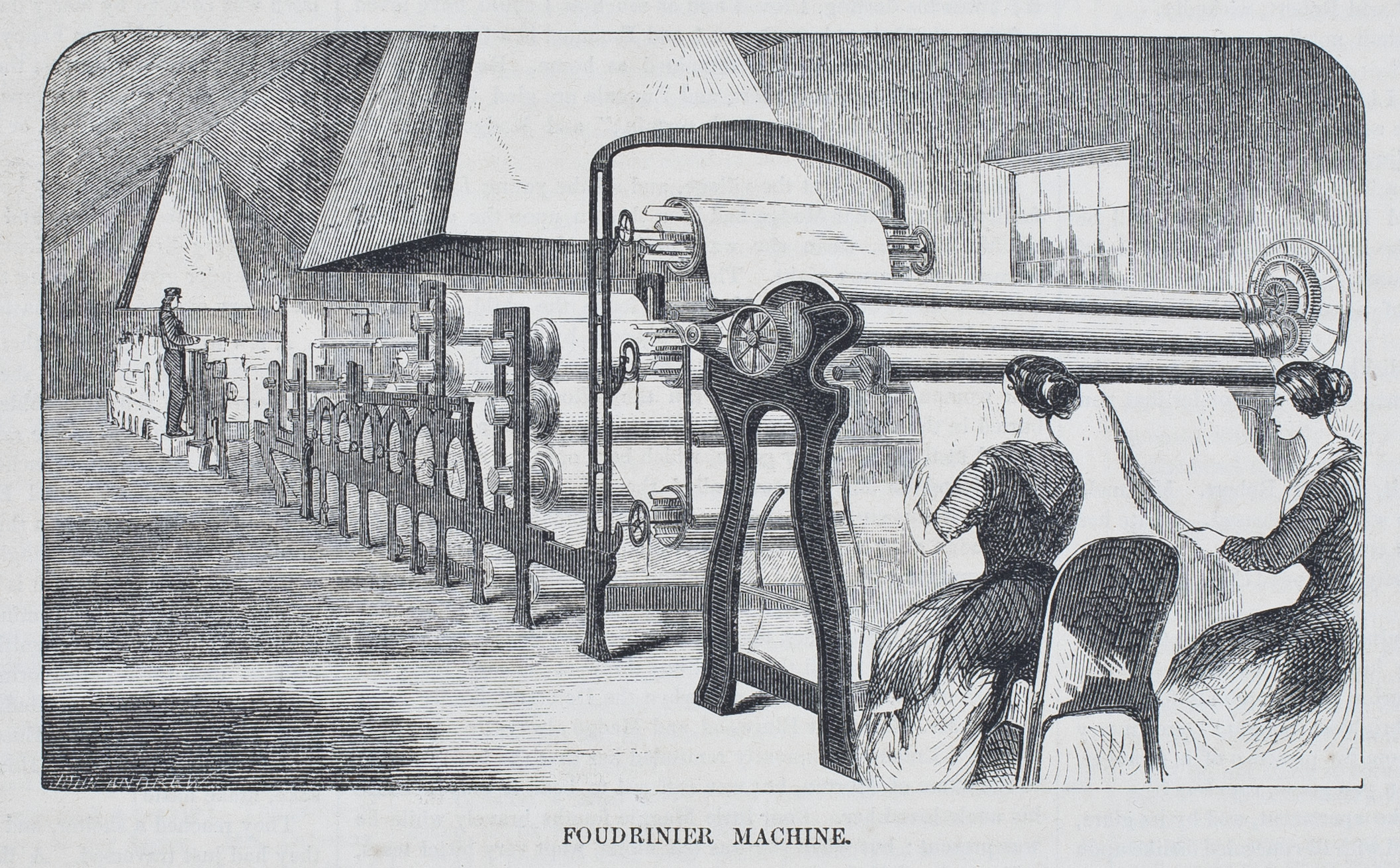After an intensive semester-long research project, students in Lindsay DiCuirci’s seminar on women and periodicals created a digital exhibition about what life was like for women working in American textile mills during the nineteenth century. The exhibition lives permanently on the American Antiquarian Society (AAS) website and serves as invaluable resource for scholars and members of the public.
DiCuirci, an assistant professor of English, led a 15-week research process last semester in which students pored over digital archives, periodical publications, databases, and other relevant material exclusively from nineteenth-century magazines and newspapers. They uncovered society’s views on women working in textile mills during this time period and the working environments they encountered to create the digital exhibition “Mill Girls in Nineteenth-Century Print.”
Students and AAS captured this in a powerful description on the exhibition homepage: “These ‘mill girls,’as they came to be known, produced valuable cloth in massive quantity, and what they received in return was something of a double-edged sword. Through the independence offered by self-sustaining employment, they came into contact with commonly oppressive working environments, both dangerous and unfair. Yet, despite the power of the industrial machine and their diminutive name, the mill girls managed to form a coalition and community of their own in response.”
Throughout the research process, “students studied core themes such as working conditions, culture, organized resistance, and labor activism and reform,” explains DiCuirci. “They began by searching hundreds of documents and by the end of the project ended up with around 50 items.”
Working closely during the semester with Molly Hardy, AAS digital humanities curator, students quickly discovered that the popularity of mill girls was largely due to their representation in print. By researching articles in labor magazines such as Voice of Industry to literary publications such as Harper’s, students gained a better understanding of the culture and working conditions in the mills and steps women took to better their lives during the time period.
“The exhibition sheds light on women’s emerging independence during this time, as well as the shift from rural to urban centers that accompanied this first wave of industrialism. From this understanding, the exhibition is not simply about an isolated class of people, but how the mill girls simultaneously witnessed and instigated a notable turning point in American history,” says Elizabeth Chen ’16, English, a student in the class.
“A big part of the importance of the research lies in women’s working conditions today,” shares Brittney Kramer ’16, English. “We might live in an entirely different time period, but women still face similar problems in the workforce.”
Through her research for the exhibition, Kramer found that women were paid less than men and were faced with difficult working conditions in the mills which still exist in areas around the world today. However, she also discovered the fascinating stories that were written by mill girls to illustrate how they viewed the nineteenth century labor movement among young women.
“We can look at the writing that comes from the mill girls themselves and see how there was also liberation in being able to work,” says Kramer. “The phenomenon of so many mill girls publishing pieces of writing, fiction, and poetry is amazing…as a community they really came together and created an entire body of work.”
DiCuirci says the exhibition can serve as an important resource for K-12 teachers, organizations studying labor issues, and scholars.
“This is an example of a project where digital humanities meets pedagogy, and this project can serve as a model for other digital humanities and literature classes.”
To view the complete digital exhibition, visit the American Antiquarian Society’s website.
Images: Photos from “Mill Girls in Nineteenth-Century Print” exhibition, American Antiquarian Society website. Header image: From Ballou’s Pictorial Drawing-Room Companion (1855). Courtesy of the American Antiquarian Society.


